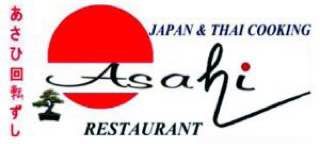Content
Valuation may be at historical cost, fair value, notional value, intrinsic value, etc. The primary purpose of doing valuation is to identify the correct value of the asset for which a deal or transaction is to be undertaken. It is not only helping sellers determine the right price for their commodity but also this aids in reaching the level to identify which class of market and the customer can be identified to settle the deal. Now, let’s say the car has broken down, and the company wants to buy another car. Previously, the car cost $20,000, but two years later, that price may have changed. Also, take note that the replacement cost is not the same as the current cost because the car has depreciated in value.
- In fact, most financial statements use a combination of those aforementioned four measurement bases.
- The historical cost principle does not account for adjustments due to currency fluctuations; hence, the financial statements will still record the value of the asset at the cost of purchase.
- At the moment, they’re more concerned with how much they could possibly get in the event of liquidation.
- An accounting period is a period of time that covers certain accounting functions, which can be either a calendar or fiscal year, but also a week, month, or quarter, etc.
- But, however, the historical cost method does not take into consideration the current market value of the asset and also ignores the time value of money or inflation.
- Get instant access to video lessons taught by experienced investment bankers.
- An asset’s market value is different than the amount recorded with the price principle.
Costs recorded in the Income Statement are based on the historical cost of items sold or used, rather than their replacement costs. Second, the historical cost as a measurement basis may not be truly representative of the current correct value of an item. For instance, the value of land purchased five years ago has surely appreciated over time. Such increase in value will never be recognized when the historical concept is used. A certain item for sale will be reported as part of your inventory at its actual historical cost of $100, even though its replacement cost has actually increased to $120. Nevertheless, valuation is the base for all the transactions, business analysis, and mergers and acquisitions deals.
Historical Cost and Intangible Assets
She is an expert in personal finance and taxes, and earned her Master of Science in Accounting at University of Central Florida. The fair value of an asset is the current price you could potentially sell the asset for. On his invoicing software, he marked the expense as an asset and inputted the details for straight-line depreciation because the machine will lose value over time. He estimates a useful life of 10 years and after that, the machine will be worth £3,000. It is a key feature of accounting and bookkeeping, as outlined by the cost principle. The market value, in contrast to the historical cost, refers to how much an asset can be sold in the market as of the present date.
The accounting process includes summarizing, analyzing, and reporting these transactions to oversight agencies, regulators, and tax collection entities. In this situation, it would cost the company $23,000 to purchase a similar asset to the one they current have in order to replace it. Thus, $23,000 is the replacement cost of the $20,000 truck because this is how much it would cost to buy that same truck today. If you’re a small business owner, you’re likely to have assets that change in value frequently. Take for instance your company’s marketable securities, such as stocks and bonds, which change in value every other day.
Historical Cost vs Market Value
Historical costing applies to both fixed assets and liabilities on a balance sheet. Liabilities may also change in value, so it is important to know their original prices as well.
The mark-to-market practice is known as fair value accounting, whereby certain assets are recorded at their market value. This means that when the market moves, the value of an asset as reported in the balance sheet may go up or down. The deviation of the mark-to-market accounting from the historical cost principle is actually helpful to report on held-for-sale assets. The historical cost principle is a basic accounting principle under U.S.
How Historical Cost Principle Works
For example, goodwill must be tested and reviewed at least annually for any impairment. If it is worth less than carrying value on the books, the asset is considered impaired. In the case of impairment, the devaluation of an asset based on present market conditions would be a more conservative accounting practice than keeping the historical cost intact.
- The historical cost principle shows the actual amount you paid for an asset, ensuring that an objective cost was recorded.
- Therefore, stakeholders may believe the company’s balance sheet to be understated.
- The different values can make it harder to determine your company’s financial health.
- Under current purchasing power method, any established and approved general price index is used to convert the values of various items in the balance sheet and profit and loss account.
The trend in most accounting standards is towards more timely reflection of the fair or market value of some assets and liabilities, although the historical cost principle remains in use. Many accounting standards require disclosure of current values for certain assets and liabilities in the footnotes to the financial statements instead of reporting them on the balance sheet. Businesswoman talking on a mobile phone What Is Historical Cost? Accounting has many rules and regulations that companies must follow when recording and reporting financial information. Among these is the historical cost principle, one of the most important concepts that relates to a company’s financial statements. This principle requires a company to report the historical cost for specific assets, such as accounts receivable, inventory and property, plants, or equipment.
Historical Cost: Advantages and Disadvantages of Using Historical Cost
The historical cost principle is the base of standard accounting practices in many cases. A company fills out its balance sheet with the items it owns and uses. Each item here is recorded at its historical https://quickbooks-payroll.org/ cost, so stakeholders know the monetary value of each item. The historical cost of items on the balance sheet offsets the value of liabilities and stockholders’ equity on the financial statement.
- You decrease the value of the asset in your books throughout the life of the asset.
- Historical cost, considers the original cost of the item, at the time and date of its acquisition.
- Companies issue various liabilities (such as accounts payable, bills payable, notes payable, bonds payable etc.) in exchange for goods and services.
- The Financial StatementsFinancial statements are written reports prepared by a company’s management to present the company’s financial affairs over a given period .
- You can also use the historical cost concept to record liabilities.
- In this lesson, you will learn about the historical cost concept, look at examples of its application, and familiarize yourself with arguments for and against its use in accounting.
IFRS and GAAP provide specific guidance on the valuation of different types of assets. The current market value of the machine in its present condition is $6,000. It’s misleading as an indication of a company’s ability to continue to operate at a specific level because its assets are undervalued. In essence, it is the unchanging anchor with which the accounting can be pinned to accurately portray the business reality. Professionals are needed for deriving the fair value, while even non-specialists can derive the historical cost. CounterpartyA counterparty in a financial transaction is the person or entity on the other side of the agreement.
What Is a Historical Cost?
An asset’s market value is different than the amount recorded with the price principle. The cost you record in your books reflects the original price ($500). You do not change the amount recorded if the market causes the equipment’s value to change. If your company’s furniture cost $10,000 on the day of purchase and it depreciates by $1,000 after one year, you need to minus the accumulated depreciation from the original purchase amount. The new book value, which is the value of your asset on the balance sheet, for your furniture is $9,000.
GAAP. Under the historical cost principle, most assets are to be recorded on the balance sheet at their historical cost even if they have significantly increased in value over time. For example, marketable securities are recorded at their fair market value on the balance sheet, and impaired intangible assets are written down from historical cost to their fair market value. Financial statements that are prepared using historical cost are relatively easier to prepare. This is predominantly because of the fact that estimating and constantly gauging the historical cost of different assets tend to be difficult from the perspective of the company. It saves the effort to carry out market research pertaining to the current price, or the market value of the financial items, as the historical cost is not subject to any future changes.
The Historical Cost Principle
This implies that the machinery that was purchased in 2019 (equivalent to $200,000), would still be recorded at the same amount in the financial statements. The Lasani Stone Crushing Company purchased a piece of equipment for $10,000 several years ago. Today, the worth of equipment is only $2,500 but the company would still report it at original cost less accumulated depreciation. An important advantage of historical cost concept is that the records kept on the basis of it are considered consistent, comparable, verifiable and reliable. At the end of the reporting period at 31st December 2010, the balance sheet of Company B would show a fixed asset of $200,000 while A’s financial statement would show an asset of $50,000 .
Further, current market or sales value is not appropriate for entities that prepare their financial statementsmore than once a year. For example, companies computing net income or preparing balance sheet on monthly basis would have to establish a new sales value for inventory and other assets at the end of each month which is usually inconvenient. Moreover, the depreciation charged in A’s financial statements (i.e. $10,000 p.a.) does not reflect the opportunity cost of the plant’s use (i.e. $20,000 p.a.).
Careers
An advertising expense for a newspaper ad in January at $900 will have to be reported at that amount in your annual income statement, even if your supplier has actually changed ad rates sometime during the year. In this lesson, you will learn about the historical cost concept, look at examples of its application, and familiarize yourself with arguments for and against its use in accounting.
If BRC, Inc. still owns that land in 2015, it would still be presented on the balance sheet for $10,000 even though the land could be worth $100,000 in 2015 standards. This is one of the major short falls with the historical cost concept. In The Balance SheetA balance sheet is one of the financial statements of a company that presents the shareholders‘ equity, liabilities, and assets of the company at a specific point in time.
However, some highly liquid assets are subject to exception of historical cost concept. For example, investments in debt or equity instruments of other enterprises that are expected to be converted into cash in near future are shown in the balance sheet at their current market value. Similarly, accounts receivable are presented in the balance sheet at their net realizable value. Net realizable value is the approximate amount of cash that a company expects to receive from receivables at the time of their collection. The historical cost concept is grounded on the going concern assumption of accounting.



